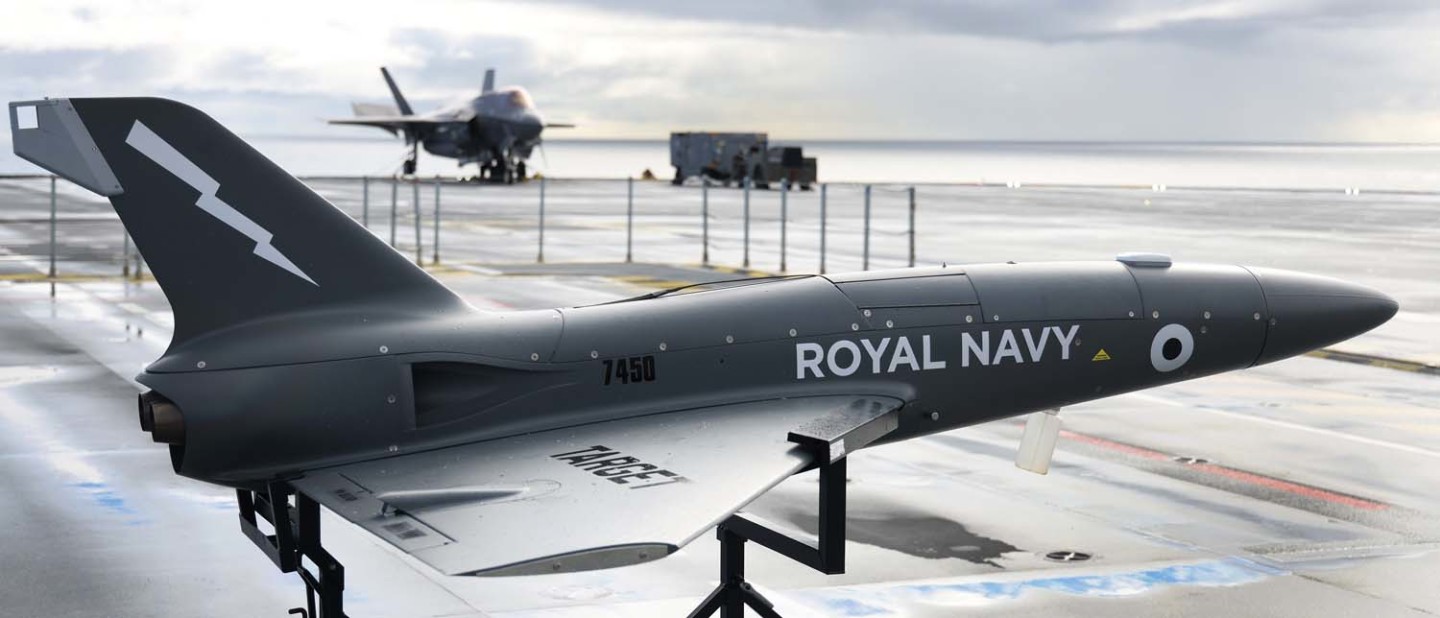The Royal Navy’s latest supercarrier, HMS Prince of Wales, has launched jet-propelled drones from its flight deck for the first time as an experiment to see if autonomous aircraft can replace crewed fighters in simulated in-coming attack exercises.
If you ask the average person what makes one navy a better fighting force than another, odds are they will point to things like ships, submarines, missiles, fighter planes, and other pieces of hardware. While these are important, the real deciding factor is constant training that is repeated so often that it becomes a matter of reflex and combat feels like an unusually realistic drill.
Unfortunately, such training is incredibly expensive and often dangerous for the participants. One example of this is the drills needed to train sailors in carrier task forces to counter attack low-flying fighter planes that get close enough to launch missiles well inside the defense umbrella.

Royal Navy
For this, the Navy relies on the Fleet Air Arm’s 736 Naval Air Squadron (NAS) flying out of Royal Naval Air Station Culdrose in Cornwall, England. This is a dedicated aggressor unit that uses Hawk T1 jet trainers as stand-ins for hostile forces.
However, there are several problems with this – not the least of which is that the Hawks are slated to retire in April 2022. Even if this wasn’t the case, using crewed aircraft is expensive, ties up experienced pilots whose time could be better spent, and restricts when and where the Navy can carry out such training exercises.
As a replacement, the Navy is looking at using QinetiQ Banshee Jet 80+ drones operating from HMS Prince of Wales. Drones have long been used in military exercises, but this is usually in the form of target drones. The Banshee, however, is being investigated as one that doesn’t just fly around trying to evade tracking and defensive fire, but also acts as an aggressor that could even launch Rattler supersonic target drones to simulate anti-ship or anti-radar missile attacks.

Royal Navy
The Banshee Jet 80+ is the latest version of the Banshee family. It’s a fixed-wing, jet propelled aircraft that is launched by a catapult and recovered by parachute. It has a wingspan of about 2.5 m (8 ft) and is powered by two 40-kg (88 lb) static thrust gas turbine engines that propel it to 400 knots (460 mph, 740 km/h) at an altitude of 25,000 ft (7,600 m) for up to 45 minutes. In addition, the small drone has the radar cross section of an incoming missile and it can carry a variety of payloads, including infra-red tracking flares, anti-radar chaff dispensers, and radar augmenters.
The hope is that the Banshee can not only act as a replacement for the Hawk in training exercises, but that they could be carried by Royal Navy warships so that task forces could conduct operational training anywhere in the world as well as on demand to prepare for quickly emerging threats.
As well as defense training, the Banshee will also be used for testing future sensors, weaponry and radio equipment. Part of the Royal Navy Develop Directorate’s Project Vampire, the recent tests of three Banshees off the northwest coast of the Hebrides in Scotland included not only assessing how the drone flies but also how its launcher and associated support equipment can operate on the busy flight deck, where Wildcat helicopters and F-35B Lightning jets are taxiing about.
“There is a real need for a low-cost drone such as the Banshee that can replicate a range of the threats in the skies and provide a test bed for future payloads,” said Commander Rob Taylor, lead for Royal Navy Air Test and Evaluation. “The key to this is that a warship can carry this drone with it on operations, launch it and use it to keep personnel razor-sharp in countering threats from above. The ability to adapt the payload for differing tasks is also crucial to provide value for money and interoperability across the fleet.”
Source: Royal Navy
Source of Article
